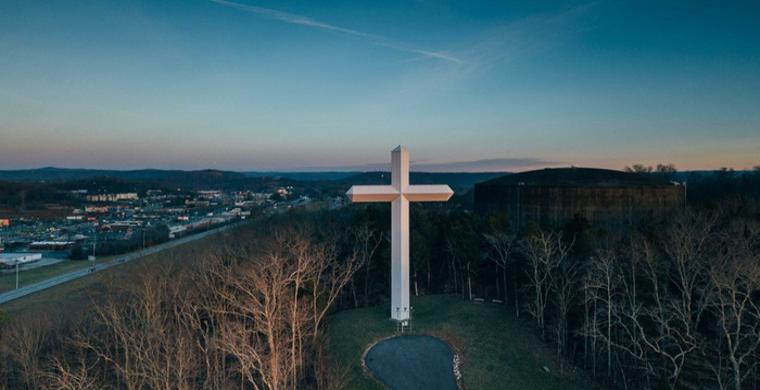Evangelicals Show No Decline, Despite Trump and Nones
The 2018 General Social Survey reports American evangelicals holding steady amid growth of the unaffiliated--and a surprising uptick for mainline Protestants
By Ryan P. Burge
CHRISTIANITY TODAY
https://www.christianitytoday.com/
March 21, 2019
Evangelicals in the United States are holding steady at just under a quarter of the population, according to the latest biennial figures from the General Social Survey (GSS), one of the longest-running measures of religion in America.
Despite the quick pace of news and week-to-week political polling, it's longitudinal tools like the GSS that give social scientists the best big-picture views of how America's religious landscape is shifting. The survey has asked about religious affiliation in the same way for more than 46 years, offering authorative, reliable measures of trends in belief and behavior over time.
As Tobin Grant, editor of the Journal for the Scientific Study of Religion, pointed out: "Changes in religion are slow. No group gains or loses quickly." (The "nones," a popular term for the religiously unaffiliated, being an exception--gaining faster than other affiliations tend to because they pull from multiple faith groups.)
That's mostly what the 2018 GSS results show us. Evangelicals--grouped in this survey by church affiliation--continue to make up around 22.5 percent of the population as they have for much of the past decade, while the nones, now up to 23.1 percent themselves, keep growing. (For comparison, the Pew Research Center's 2014 Religious Landscape Survey put evangelicals at 25.4 percent and the religious nones at 22.8 percent.)
Other than one outlier--a slight peak of 24.7 percent in 2012--evangelicals have ranged from 22.5 percent to 24 percent of the US population over the past 10 years. Still, this steadiness doesn't mean "no change" among the evangelical population. There is always a "churn" occurring within any religious group. People leave the group because of death or defection, while new members either grow up in the faith or convert as adults.
The fact that evangelicals' share of the population remains relatively stable over the last decade is striking given the continued rise of the nones. Evangelicals have been able to replace losses as fast as they are occurring, at least for now. Recent survey evidence has found that nearly 95 percent of born-again Christians stayed that way from 2010 to 2014, compared to just 85 percent of those who said that they were Protestant but not born-again. In addition, a significant portion of "nothing in particular" respondents do make their way back to evangelical churches.
Between the previous GSS in 2016 to the most recent in 2018, evangelicals dropped about 1.4 percent--not enough to amount to a significant change, and within the survey's margin of error. When you look at the long-range trends, evangelicals have increased their share of the population by about 5 percentage points since 1972, though they're currently 7.5 percentage points lower than their highest share of the US population: 29.9 percent in 1993, just as the nones began their upswing.
One challenge for evangelicals ahead will be simple demography. In 2018, 81 percent of evangelicals were white, compared to 72.4 percent of the population overall. More than 4 in 10 Americans under 25 are people of color. For evangelicals to keep offsetting losses in future generations, they will need to become more racially diverse.
The unaffiliated have had a much more dramatic trajectory, starting at just 1 in 20 of GSS respondents back in 1972. The nones experienced big jumps in 1993 and 1998, and have added, on average, 1-1.5 percentage points every 2 years for the last 10 years.
Their continued growth has been well-documented and at this point, expected. The big finding in 2018 is that those of "no religion" are now as common as evangelicals in the US, both about 23 percent of the population.
The difference between these groups is not statistically significant at this point; but I see no reason to think that the nones will level off anytime soon. If the nones maintain their growth while evangelicals stagnate, it is statistically inevitable that those of no religious faith will be the largest group in America in the next five years.
Last year also brought a small uptick in the number of people who identify as mainline Protestants--their first increase in nearly 20 years.
Mainline Protestants include those who identify as United Methodists, Episcopalians, or American Baptists. They have suffered tremendous declines over the last 40 years, going from 30 percent of the population in 1972 to just 10 percent in 2016. But in 2018, that share bumped to 11.8 percent.
It would unwise to extrapolate too much from a single-year increase. However, it may be the result of some moderate Protestants leaving evangelicalism for mainline denominations over Donald Trump's presidency. Evangelicals declined 1.4 percent between 2016 and 2018, while mainline Protestants saw a slight increase. It is too early to say that these evangelical losses were mainline gains; however, if this trend continues or possibly accelerates in the next two years, it would give some credence to the claim that Trump has led to evangelical defections.
The GSS also shows that mainline Protestants have continued to move toward the left of the political spectrum, while evangelicals maintain their shift to the right. This continuing polarization may lead more moderate evangelicals to seek out a church that shares their political worldview. (Other surveys conducted after Trump's election found that evangelical or born-again Christians who voted for Hillary Clinton were more likely to drop the label or see church attendance slide between 2011 and 2017.)
This trend will need to be monitored in upcoming waves of the GSS.














